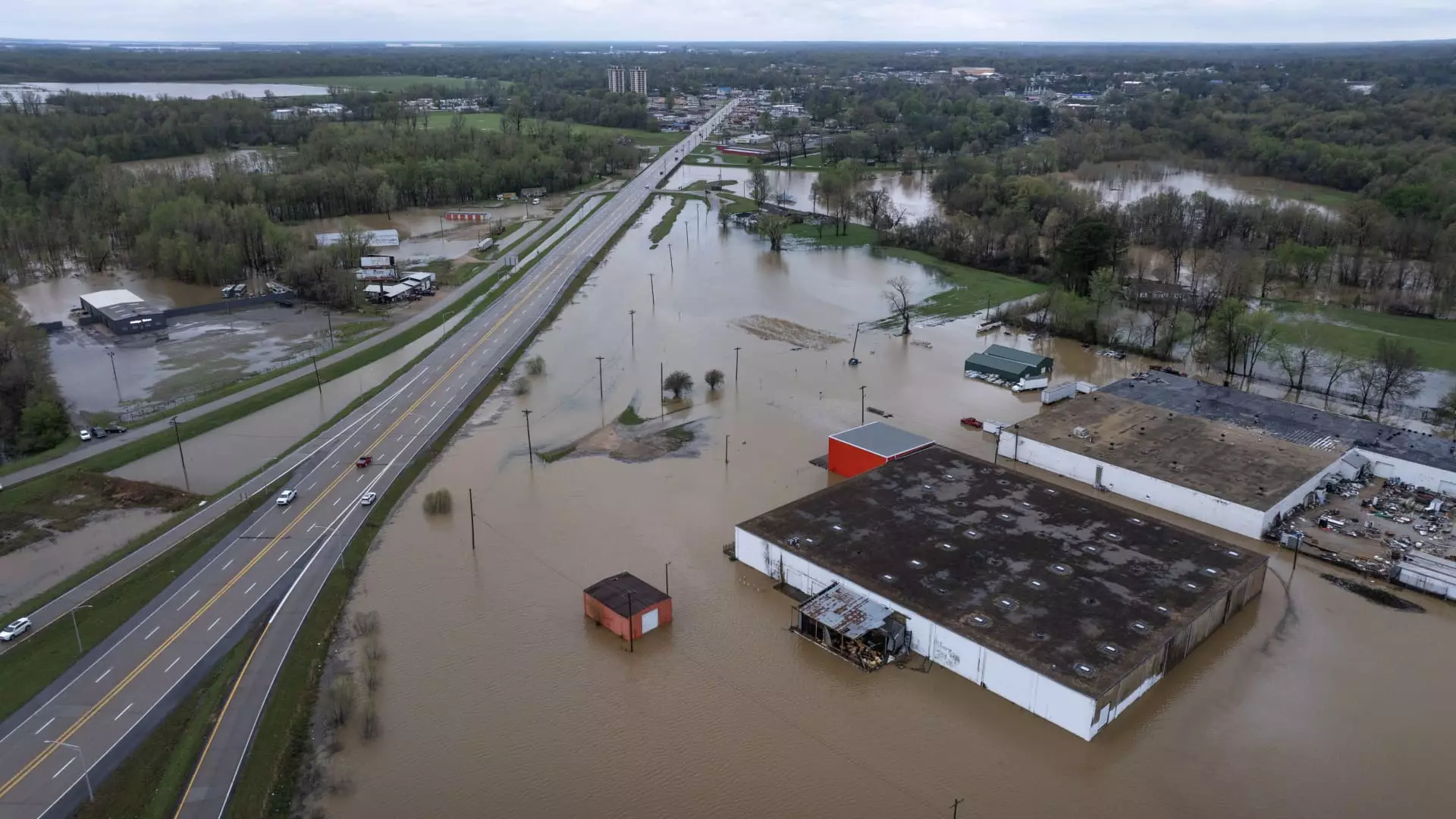Nature has once again unleashed its wrath upon the Northeast, plunging millions into chaos as heavy rains drench the region. Recent storms have not only claimed lives but have also disrupted communities across the Midwest and Mid-South, creating a tapestry of devastation. The tragedy of losing at least 21 souls sheds light on the harrowing consequences of the climate crisis we face. As we wake to news of relentless flooding, it becomes evident that this catastrophe is not merely a freak occurrence; it is a dire warning of the precarious balance we must maintain.
The aftermath of last week’s storms paints a grim picture. From Arkansas to Tennessee, communities are left grappling with the loss of their homes and cherished belongings. The stories that emerge from the rubble are heartbreaking—people reaching out for help only to realize that their lives have been turned upside down. It is easy to dismiss natural disasters as mere statistics, but each number represents a life shattered. This is not only about the damage to infrastructure; it is about the human toll that often goes unnoticed.
The Deluge of Pain in Kentucky
Kentucky has emerged as the epicenter of this destruction, confronting a deluge that seems almost unimaginable. The staggering 7 inches of rain recorded in Anderson County is not just a number; it signifies the anguish of families forced to evacuate their homes, the frustration of emergency services stretched to their limits, and the fear gripping a community that once felt secure. Chad Womack, assistant chief of the Anderson County Fire Department, poignantly described the situation as “one of those once-in-a-generation types storms.” This dire assessment is a reminder that climate change is no longer a distant threat; it is an ongoing crisis we must confront immediately.
With mandatory evacuations in place, the fear of rising waters looms large. The local fire department’s efforts to rescue over 40 individuals is a testament to the courage and resilience of those who are on the frontlines. But it also begs the question: how long can emergency services continue to operate under such extreme conditions? And at what point do we reevaluate measures in place to protect communities vulnerable to such disasters?
The Climate Crisis: An Inconvenient Truth
What we are witnessing should not just be categorized as a series of unfortunate events; instead, it must be acknowledged as a reflection of the larger climate crisis that threatens our very existence. Flooding levels that peak in midweek, alongside historical rainfall records, indicate that this is not a slip of nature’s hand but rather a systematic failure to respond to warning signs. The National Weather Service forecasts significant rainfall across several states, marking a grim reminder of the growing intensity and frequency of such storms.
With 93 preliminary tornadoes reported within days, and multiple rivers already situated in a major flood stage, the urgency is palpable. Communities in Hardy, Arkansas; Columbus, Indiana; and Dawson Springs, Kentucky, are not just faces on a map; they represent the real-life consequences faced by individuals who are now displaced and desperate. As the East prepares for yet more rain, the cycle of destruction continues unabated, while leaders are caught in the crossfire of political agendas that prioritize short-term gains over the long-term sustainability of our environment.
Moving Forward: A Call to Action
As the storm systems make their way across the country, leaving chaos in their wake, we stand at a crossroads. The Northeast is enduring the aftermath of an unprecedented weather pattern, but it is not too late to change our trajectory. The time for comprehensive climate action is now. We must challenge our leaders to enact policies that prioritize the well-being of our communities, not just during crises but as a preventative measure.
Solving the climate crisis requires more than just an awareness of our vulnerability; it demands a concerted effort towards sustainable practices, infrastructure investments, and regional cooperation. Each storm serves as a reminder of how interconnected our lives are and how unprepared we remain for the challenges ahead. It is incumbent upon all of us to not only respond to this immediate crisis but also to advocate for a sustainable future. A collaborative movement is what we need—to build a society that recognizes and mitigates the impact of climate change before the next storm washes away more lives.



Leave a Reply